Cardiovascular disorders
Cardiovascular disorders include
- Vascular and circulatory disorders
- Cardiac disorders
- The category you were looking for was not found. Please try another one.
- List is empty.

Heart valve disease
Heart valve disease, or valvular heart disease, is a possible source of health problems such as fatigue, dizziness, fainting, palpitations, chest pain or shortness of breath. Heart valve failure can lead to heart failure.

hemorrhoids
Hemorrhoids or as know also as piles, are a frequent problem of adults with a significant impact on comfort and often even ones' psyche.
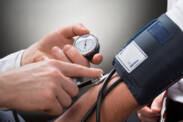
High Blood Pressure
Hypertension, as high blood pressure is professionally referred to, is the most common disease of the cardiovascular system. It affects up to 25% of the world's adult population. It is a significant risk factor for the development of acute or chronic problems.

Hypertensive crisis
Hypertensive crisis is a life-threatening condition characterized by a sudden and sharp increase in blood pressure. It is accompanied by the risk of damage and failure of vital organs.

Ischemic heart disease
Ischemic heart disease, also known as coronary heart disease, bothers us with insufficient blood supply to the heart. The main reason is the involvement of the heart, ie coronary vessels. It can be in acute or chronic form. The dreaded heart attack also includes the acute type.

Hypotension
We speak of low blood pressure - hypotension when the blood pressure values are lower than 100/60 for a long time. Some people, especially women, know dizziness, fainting or a feeling of falling away. Is it a disease or not?

Myocardial infarction
Myocardial infarction or even heart muscle infarction is an acute form of ischemic heart disease. Ischemia, or bloodlessness, is caused by a blockage in the coronary artery that leads blood to the heart muscle cells. The main cause is a sudden closure or long-term narrowing of the blood vessel.
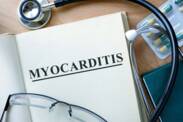
Myocarditis
Myocarditis is an inflammatory process of the heart muscle. Inflammation of the heart muscle can cause a decrease in heart function. What are the causes, first symptoms and current treatment options for myocarditis?

Pericarditis
Pericarditis refers to an inflammatory process of the outer lining of the heart (pericardium). It has different etiologies. What is the cause of pericarditis, the first symptoms and treatment options?

Peripheral Artery Disease
Peripheral artery disease is a term for diseases of the arteries that supply various parts of the body. Blood vessels are usually damaged due to atherosclerosis, but it is not the only cause.

Post-thrombotic syndrome
Post-thrombotic syndrome arises as a complication of venous thrombosis. This is a condition that can significantly affect the quality of life of the affected person.
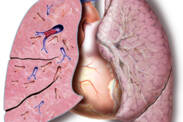
Pulmonary embolism
Pulmonary embolism (PE) is an acute condition in which blood vessels in the lungs become clogged. The most common cause is thromboembolic disease. A blood clot is released and travels through the vessels as an embolus. It clogs vessels. The massive form of PE is life-threatening.

Pulmonary heart disease - cor pulmonale
Pulmonary heart disease is the enlargement of the heart as a result of a lung disease. There is an acute and a chronic form.
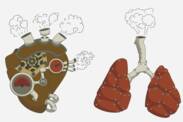
Pulmonary hypertension
Pulmonary hypertension is a disease that limits the person's overall performance, quality of life and life expectancy. The cause may not always be clear or there might be another disease behind it.

Raynaud Syndrome
Raynaud syndrome is manifested by episodes of reduced blood flow to end arterioles, most commonly the fingers and toes. The condition may indicate a more serious health problem, but not necessarily.

Thromboembolic disease
Thromboembolic disease poses a risk of developing serious complications that threaten a person's life.
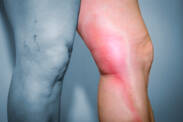
Thrombophlebitis of superficial veins
Superficial thrombophlebitis is an inflammatory disease of the superficial veins. It mainly involves the veins of the lower extremities.
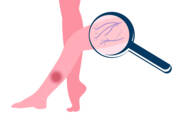
Tiber ulcer
Many of us are familiar with a tibial ulcer, at least from hearsay. Let's take a closer look at the causes, symptoms and treatment.
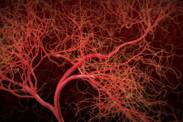
Vasculitis
The term vasculitis denotes a broad group of diseases characterized by inflammation to necrosis of the vascular wall. They affect all types of blood vessels and anywhere in the body.

Varicose veins
Varicose veins are the most common disease in developed countries. They are classified as diseases of civilization. They are estimated to affect 10-40% of the world's population. Their incidence also depends on age, with women more frequent.









